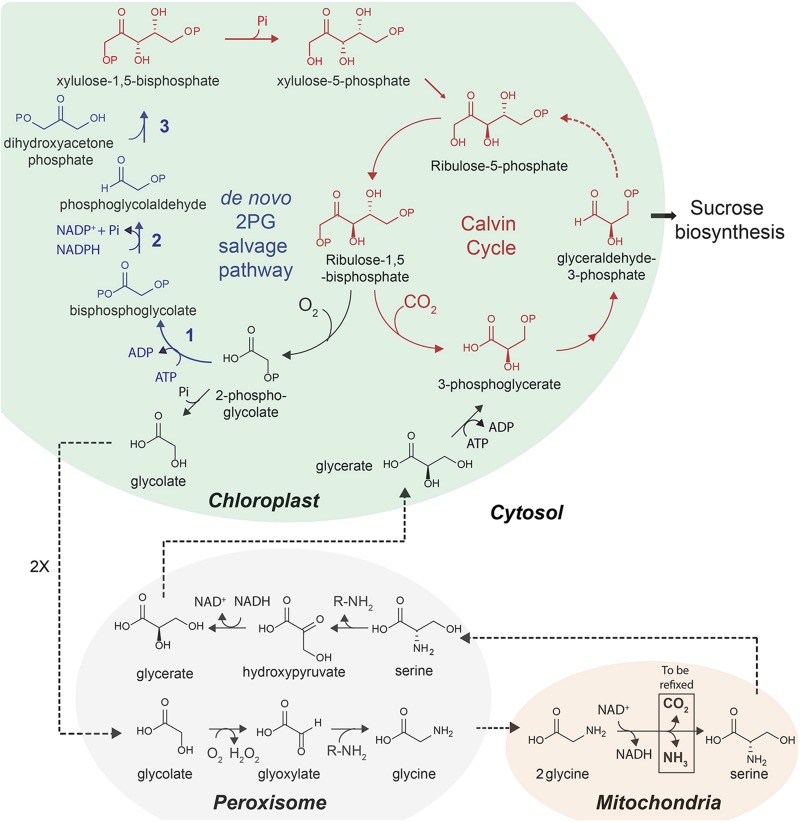Fig. 2.
Proposed de novo 2-phosphoglycolate salvage pathway. Calvin cycle in red, photorespiratory pathway in black, de novo 2-phosphoglycolate (2PG) salvage pathway in blue fonts, respectively. In the C3 cycle (not all steps shown), Rubisco fixes CO2 to ribulose-1,5-bisphosphate to generate two molecules of 3-phosphoglycerate. Approximately 25% of the time, Rubisco oxygenates ribulose-1,5-bisphosphate, generating 2PG and 3-phosphoglycerate. The photorespiratory pathway consumes ATP to regenerate 3-phosphoglycerate from two molecules of 2PG. Photorespiration is metabolically inefficient, requiring eight enzymatic steps (here the amino donor/acceptor is designated R), taking place across four different subcellular compartments, and resulting in an overall loss of carbon dioxide and ammonia that needs to be refixed at the cost of substantial additional energy (3 ATP and 2 NADPH per CO2, and 1 ATP and 1 NADPH per NH3). The proposed de novo 2PG salvage pathway would efficiently convert 2PG to xylulose-1,5-bisphosphate in three steps in a single compartment using only one ATP and one NADPH, without loss of fixed carbon. The three enzymes needed in the proposed de novo 2PG salvage pathway are as follows: kinase (step 1), reductase (step 2), and aldolase (step 3). Xylulose-1,5-bisphosphate is a stromal metabolite that is converted to the C3 cycle intermediate xylulose-5-phosphate by the cbbY protein (63). The capacity of the cbbY may not be sufficient to sustain the flux and may need to be up-regulated.

